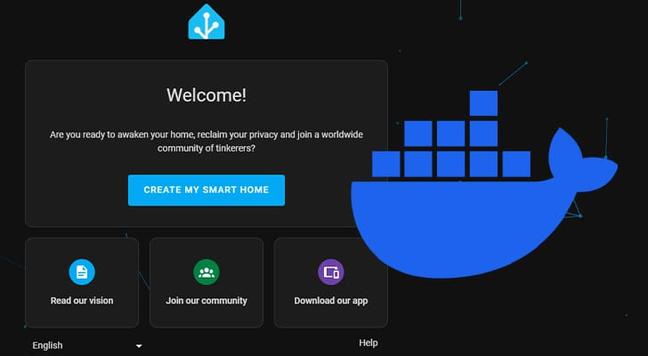#SelfHosted #LinkAce Bookmark Manager Running, but Unable to Check for Updates or Generate a Cron Token
Hi all. Hoping someone in the #SelfHosting community can help here. I'm running LinkAce in #Docker behind non-Dockerized #Caddy and #Authelia, and most things are working, but I'm seeing "Could not check for updates" at the bottom of each page, and when I tried to generate a cron token, nothing happened except for the generate button graying out. I am seeing one or two 404 errors in my logs, but I don't know if that's causing the problem or not. I don't know much about #PHP applications.
Logs
2025-02-22 23:25:26,460 INFO supervisord started with pid 1
2025-02-22 23:25:27,465 INFO spawned: 'php-fpm' with pid 8
2025-02-22 23:25:27,467 INFO spawned: 'caddy' with pid 9
[22-Feb-2025 23:25:27] NOTICE: [pool www] 'user' directive is ignored when FPM is not running as root
[22-Feb-2025 23:25:27] NOTICE: [pool www] 'group' directive is ignored when FPM is not running as root
[22-Feb-2025 23:25:27] NOTICE: fpm is running, pid 8
[22-Feb-2025 23:25:27] NOTICE: ready to handle connections
{"level":"info","ts":1740266727.5264525,"msg":"using config from file","file":"/etc/caddy/Caddyfile"}
{"level":"info","ts":1740266727.5280282,"msg":"adapted config to JSON","adapter":"caddyfile"}
{"level":"warn","ts":1740266727.5280406,"msg":"Caddyfile input is not formatted; run 'caddy fmt --overwrite' to fix inconsistencies","adapter":"caddyfile","file":"/etc/caddy/Caddyfile","line":2}
{"level":"info","ts":1740266727.529092,"logger":"admin","msg":"admin endpoint started","address":"localhost:2019","enforce_origin":false,"origins":["//localhost:2019","//[::1]:2019","//127.0.0.1:2019"]}
{"level":"warn","ts":1740266727.529331,"logger":"http.auto_https","msg":"server is listening only on the HTTP port, so no automatic HTTPS will be applied to this server","server_name":"srv0","http_port":80}
{"level":"info","ts":1740266727.5294206,"logger":"tls.cache.maintenance","msg":"started background certificate maintenance","cache":"0x40000bab00"}
{"level":"warn","ts":1740266727.530186,"logger":"http","msg":"HTTP/2 skipped because it requires TLS","network":"tcp","addr":":80"}
{"level":"warn","ts":1740266727.530195,"logger":"http","msg":"HTTP/3 skipped because it requires TLS","network":"tcp","addr":":80"}
{"level":"info","ts":1740266727.530198,"logger":"http.log","msg":"server running","name":"srv0","protocols":["h1","h2","h3"]}
{"level":"info","ts":1740266727.5412574,"msg":"autosaved config (load with --resume flag)","file":"/home/www-data/.config/caddy/autosave.json"}
{"level":"info","ts":1740266727.541271,"msg":"serving initial configuration"}
{"level":"info","ts":1740266727.5477707,"logger":"tls","msg":"cleaning storage unit","storage":"FileStorage:/home/www-data/.local/share/caddy"}
{"level":"info","ts":1740266727.5541356,"logger":"tls","msg":"finished cleaning storage units"}
2025-02-22 23:25:28,555 INFO success: php-fpm entered RUNNING state, process has stayed up for > than 1 seconds (startsecs)
2025-02-22 23:25:28,555 INFO success: caddy entered RUNNING state, process has stayed up for > than 1 seconds (startsecs)
::1 - 22/Feb/2025:23:25:34 +0000 "GET /index.php" 200
::1 - 22/Feb/2025:23:25:34 +0000 "GET /index.php" 404
Docker Compose file
services:
# --- LinkAce
linkace:
image: docker.io/linkace/linkace:latest
container_name: linkace
restart: unless-stopped
depends_on:
- linkace_db
ports:
- "0.0.0.0:3009:80"
volumes:
- ./.env:/app/.env
- ./backups:/app/storage/app/backups
# --- Database
linkace_db:
image: docker.io/library/mariadb:11.5
container_name: linkace_db
restart: unless-stopped
command: mariadbd --character-set-server=utf8mb4 --collation-server=utf8mb4_bin
environment:
- MYSQL_ROOT_PASSWORD=${DB_PASSWORD}
- MYSQL_USER=${DB_USERNAME}
- MYSQL_PASSWORD=${DB_PASSWORD}
- MYSQL_DATABASE=${DB_DATABASE}
volumes:
- db:/var/lib/mysql
# --- Cache
linkace_redis:
image: docker.io/bitnami/redis:7.4
container_name: linkace_redis
restart: unless-stopped
environment:
- REDIS_PASSWORD=${REDIS_PASSWORD}
volumes:
db:
.env (secrets redacted)
## LINKACE CONFIGURATION
# The app key is generated later, please leave it like that
APP_KEY=redacted
APP_ENV=development
## Configuration of the database connection
## Attention: Those settings are configured during the web setup, please do not modify them now.
# Set the database driver (mysql, pgsql, sqlsrv, sqlite)
DB_CONNECTION=mysql
# Set the host of your database here
DB_HOST=linkace_db
# Set the port of your database here
DB_PORT=3306
# Set the database name here
DB_DATABASE=linkace
# Set both username and password of the user accessing the database
DB_USERNAME=linkace
# Wrap your password into quotes (") if it contains special characters
DB_PASSWORD=redacted
## Redis cache configuration
# Set the Redis connection here if you want to use it
REDIS_HOST=linkace_redis
REDIS_PASSWORD=redacted
REDIS_PORT=6379
APP_DEBUG=true
# SSO configuration
SSO_ENABLED=true
SSO_OIDC_ENABLED=true
SSO_REGISTRATION_ENABLED=true
REGULAR_LOGIN_DISABLED=true
SSO_OIDC_BASE_URL=https://auth.laniecarmelo.tech/ # Your Authelia base URL
SSO_OIDC_CLIENT_ID=linkace
SSO_OIDC_CLIENT_SECRET='redacted'
SSO_OIDC_SCOPES=openid,profile,email
Caddyfile snippet
{
email laniecarmelo@gmail.com
debug
acme_dns cloudflare redacted
http_port 80
https_port 443
admin :2019 {
origins 127.0.0.1:2019 0.0.0.0:2019 stormux:2019 caddy.laniecarmelo.tech
}
}
(logconfig) {
log {
output stdout
format json
}
}
(auth_headers) {
header Strict-Transport-Security "max-age=31536000; includeSubDomains; preload"
}
(proxy_config) {
header_up Host {http.request.host}
header_up X-Real-IP {http.request.remote}
header_up X-Forwarded-User {http.auth.user.id} # Pass user ID
header_up X-Forwarded-Email {http.auth.user.email} # Pass email
}
(authelia_middleware) {
forward_auth localhost:9091 {
uri /api/verify?rd=https://auth.laniecarmelo.tech
copy_headers Remote-User Remote-Email Remote-Groups Authorization
}
}
bookmarks.laniecarmelo.tech {
route {
import authelia_middleware
reverse_proxy localhost:3009 { # Directly proxy to LinkAce's web server
import proxy_config
}
}
import logconfig
import auth_headers
}
Authelia config snippet
- domain: "*.laniecarmelo.tech"
policy: bypass
networks:
- 192.168.1.0/24 # Local network
- 172.17.0.0/16 # Docker bridge network
- 100.64.0.0/10 # Tailscale network
- domain: "bookmarks.laniecarmelo.tech"
resources: ["^/api.*"]
policy: bypass
- domain: "*.laniecarmelo.tech"
policy: one_factor
- client_id: linkace
client_name: LinkAce bookmarking app
client_secret: redacted
public: false
authorization_policy: one_factor
scopes: [openid, groups, profile, email, offline_access]
redirect_uris:
- https://bookmarks.laniecarmelo.tech/auth/oidc/callback
grant_types: [authorization_code]
response_types: [code]
response_modes: [form_post, query]
userinfo_signed_response_alg: none
consent_mode: explicit
pre_configured_consent_duration: "1y"
Does anyone know what might be causing this and how I can fix it?
#Linux #ArchLinuxARM #Stormux #RaspberryPi #RaspberryPi500 #RPi #RPi500 #tech #technology
@selfhost @selfhosted @selfhosting



